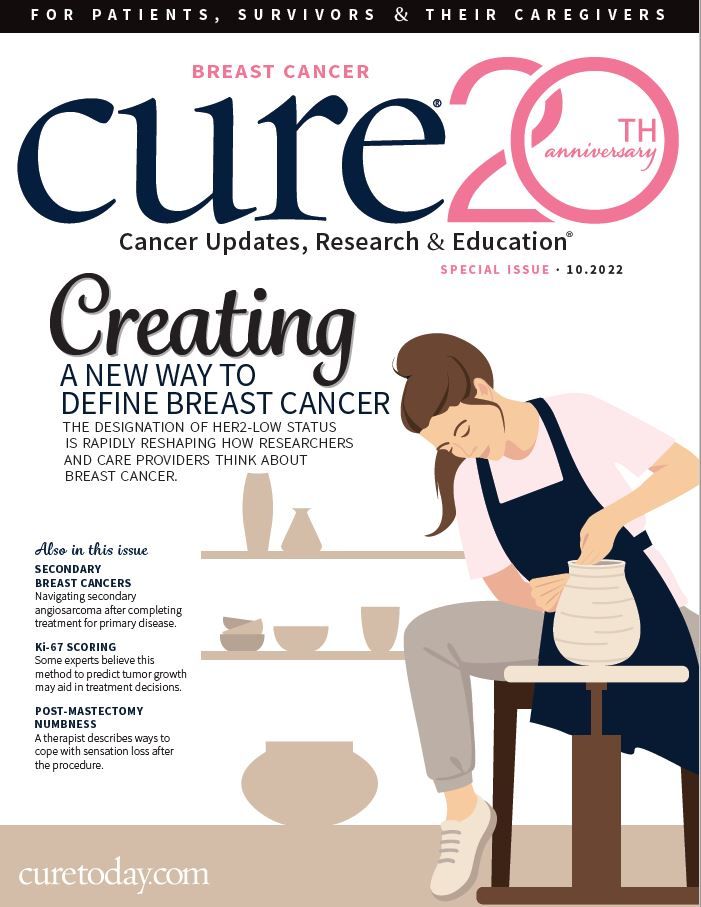Publication
Article
CURE
HER2-Low Classification Is a 'Big Leap Forward' for Breast Cancer Treatment
Author(s):
Enhertu's FDA approval marked a major milestone in the breast cancer space, as it was the first drug to be approved for patients with HER2-low disease.
It has been almost 25 years since the approval of Herceptin (trastuzumab), a groundbreaking therapy that targeted the human epidermal growth factor receptor 2 (HER2) oncogene and ushered in a new phase of targeted therapy that has saved thousands of lives.
Ongoing research in the biology of the HER2 signaling pathway led to many newer lines of investigation that continue to generate novel successful treatments, further improving the life expectancy of patients with HER2-positive breast cancer.
As detailed in this issue of CURE®, a big leap forward has been taken just this summer with the reporting of the DESTINY- Breast04 trial. This trial was a first because it addressed a group of patients with tumors that were technically HER2 negative — in that they expressed low levels of HER2 that fall below the threshold for which any response or benefit from Herceptin would be expected.
The story began when the antibody-drug conjugate, Enhertu (fam-trastuzumab deruxtecan- nxki), which had recently been approved by the Food and Drug Administration as a later line of therapy for advanced HER2- positive breast cancer, had been shown in a pilot study to break the barrier in activity with patients who had HER2-negative tumors that showed a small amount of HER2 in the cell membrane using standard HER2 antibody staining techniques.
We are still trying to understand this newly coined class of “HER2 low” tumors.
It is not clear that these are biologically different from HER2-negative tumors. However, because Enhertu is an antibody-drug conjugate designed to bind to HER2-expressing cells regardless of their biology, HER2-low cells could be vulnerable due to the way antibody-drug conjugates work.
The HER2 antibody part of the antibody- drug conjugate binds to the HER2 receptor on the cell surface, and together with the linked toxic drug, is drawn into the cell.
Like a Trojan horse, the “soldiers” — a drug called deruxtecan that inhibits cell growth by interfering with DNA division — are released into the cell. The design of this antibody-drug conjugate is different than that of earlier versions like Kadcyla (T-DM1, or ado-trastuzumab emtansine), which only kills HER2positive but not HER2-low cells.
The DESTINY-Breast04 trial compared Enhertu to standard chemotherapy for patients with HER2-low breast cancer and showed such a notable improvement in the time to tumor progression and overall survival that it drew a standing ovation when presented at the American Society of Clinical Oncology meeting in June 2022.
Given the fact that more than half of all breast cancers are HER2 low, this significantly expands options when hormonal or chemotherapeutic drugs are no longer effective.
Moreover, it lays the foundation for a whole new generation of antibody-drug conjugates made of antibodies that can be customized to bind to proteins expressed by certain tumors and linked to drugs that have not been used as prior therapy, maximizing chances for success.
Debu Tripathy, M.D.
Editor-in-chief
Professor of Medicine
Chair, Department of Breast Medical Oncology
The University of Texas MD AndersonCancer Center




